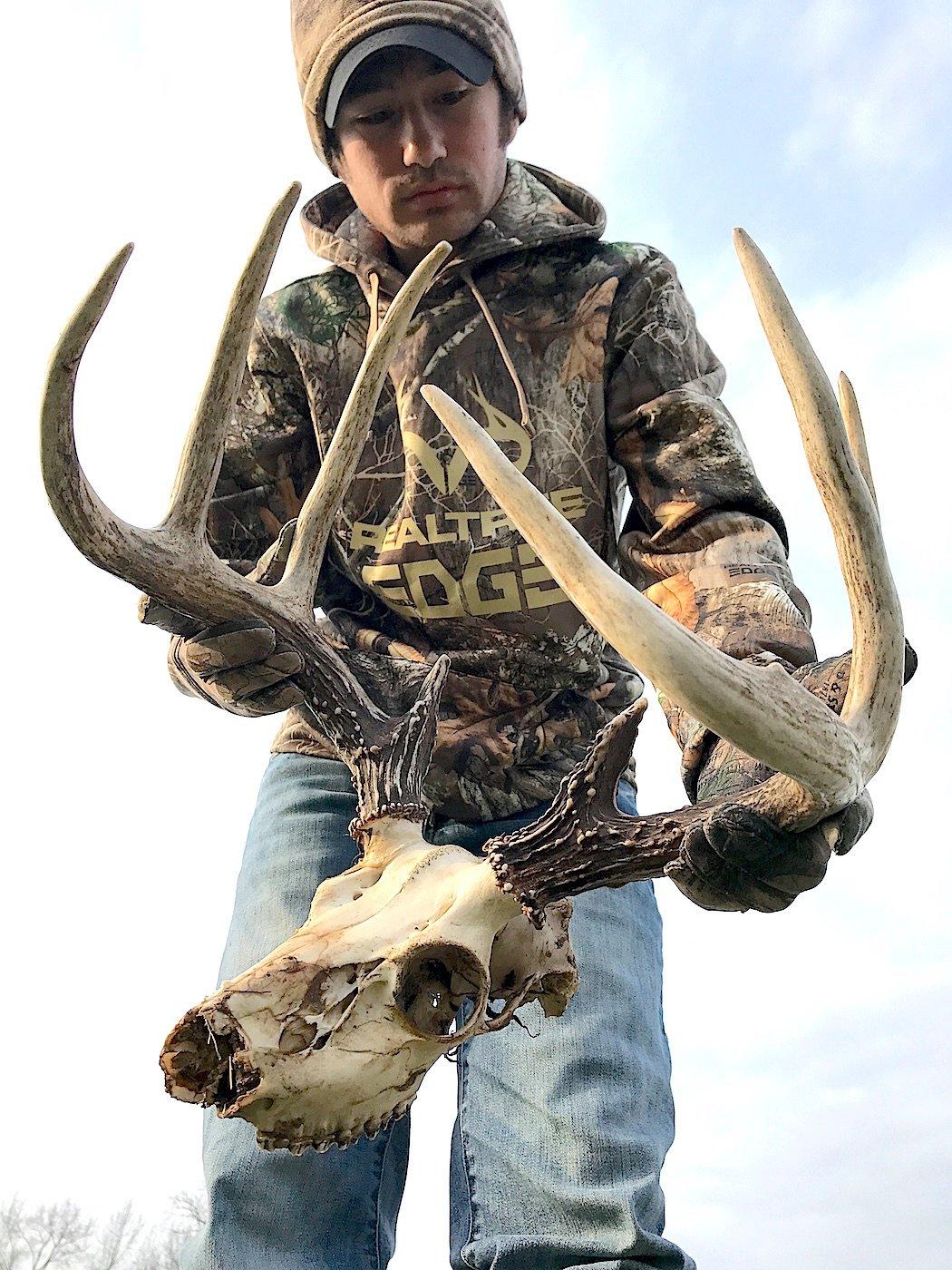Disease, divisiveness, diminishing funds and more threaten hunting as we know it
Everybody loves a positive trend, including deer hunters. Negative trends, not so much. Unfortunately, there are some bad trends happening with deer hunting right now, including these below. We might not like them, but we do need to know about them:
Declining Hunters, Their Money and Their Votes
According to the U.S. Fish & Wildlife Service, hunter numbers in 2016 were 11.5 million, down big-time from the all-time high of 17 million hunters back in 1982.
On the surface, it doesn't look terrible, but many of the hunters out there right now are Baby Boomers, and most of that generation will age out of hunting within the next 20 years. Once that occurs, hunter numbers could decline by another 35%.
Fewer hunters means less funding for conservation, both from hunting licenses sold and from Pittman-Robertson funds gained from the excise taxes on firearms, ammunition and other hunting gear. In 2006, hunting expenditures totaled $27.4 billion, but that decreased to $26 billion within 10 years. Fewer hunters means less hunting gear sold and fewer conservation dollars gained to conserve wildlife.
If this problem persists, wildlife managers and state officials will have to find that money elsewhere, which means more non-consumptive outdoor activities must help cover the tab. With hunters making up less than 5% of the American population today, we're already relying on many non-hunters to retain our rights to go afield. Relinquishing an overwhelmingly majority of the voting and decision-making power over hunting to non-hunters isn't a good thing.
New Wildlife Biologists Who Aren't Hunters
There's a sad truth grumbling throughout the world of wildlife biology. Fewer biologists are hunters, which means non-hunters who've never experienced the outdoors from the hunting perspective are making management decisions. Even scarier — they're drafting and influencing hunting regulations. In most cases, there's likely little concern. But do we really want non-hunters making decisions on deer and deer hunters' behalf? I certainly don't.
Nick Pinizzotto, president and CEO of the National Deer Alliance (NDA), recognizes the concern, but isn't entirely bothered by it.
I think it's great that people who have an interest in wildlife pursue that in their education and ultimately choose it as a profession, Pinizzotto said. At this year's Southeast Deer Study Group meeting in Auburn, Alabama, I talked with two graduate students [who] aren't currently hunters but have a passion for wildlife management. Neither grew up in hunting families and the primary reason they haven't hunted yet is because they haven't had the opportunity, either through being introduced or simply due to time constraints. They told me they support hunting as a primary management tool and that they hoped to become hunters someday. I think we need to focus on being inclusive as opposed to immediately skeptical or concerned when a new wildlife professional isn't an experienced hunter. I see it as an opportunity eventually help them break into the sport, and then they become likely mentors themselves as that can relay their own experience to others.
He acknowledges there is risk with this trend but feels differently about it overall. Will there be some who pursue wildlife management as a profession because they are opposed to hunting and somehow want to involve themselves with stopping it? Maybe, Pinizzotto says. But I believe it's very few. I think being a hunter can certainly be helpful as a wildlife management professional, but I don't think it has to be a be a prerequisite. Some of the wildlife managers I've worked with and have the most respect for didn't become hunters until later in their lives.
Chronic Wasting Disease (CWD) Prevalence Increases
According to the CDC, CWD now ails whitetails in 26 states and two Canadian provinces. It was first discovered in captive Colorado herds in the late 1960s. By 1981, it had spread to wild deer. Nearly 40 years later, it's in two dozen states, and could easily inhabit areas it hasn't been detected yet. It's all bad news for deer and hunters alike.
Epizootic Hemorrhagic Disease (EHD) Prevalence Increases
My home state of Kentucky was hit hard with EHD in 2007, 2012, 2013, 2017 and 2019. A lot of deer herds took it on the chin. On the local level, deer populations in regions with repeat bouts have really tanked. It isn't just Kentucky, though. Iowa, Illinois, Missouri, Kansas, Indiana, Ohio and many other states have experienced this in recent years, too.
Midwest Whitetail's Bill Winke knows the pain of losing deer to this disease all too well. We got creamed in 2012, he says. EHD is a virus that's carried by little bugs called midges. They live in muddy areas. In years where the water is high and then recedes, or sometimes in drought years, you'll have mud flats all over the place. That's where these midges propagate and breed.
Each outbreak is different, and the mortality rate varies greatly. Deer that contract EHD and survive it obtain short-term immunities as well and can pass these on to offspring. Unfortunately, new strains of EHD continue to crop up, and even suspiciously show up in places such strains didn't previously exist. In such instances, antibodies are useless, and it's an ugly trend that continues to persist.
Divisiveness Amongst Existing Hunters
Finally, I'm tired of all the infighting. Outdoorsmen are dealing with enough strife as it is. It's time we put aside insignificant feuds and focus on the real issues. And if you don't know which ones those are, re-read this blog post.
CWD is an excellent example of infighting. High fences vs. free range and their respective relations to the movement of captive and wild cervids. Whether or not this disease is a true threat. (Spoiler — it's a huge threat.) How to combat it. All of these and more are hot-button issues that rile people up.
Don't Miss: The Latest on Chronic Wasting Disease
Check out more stories, videos and educational how-to's on deer hunting.









